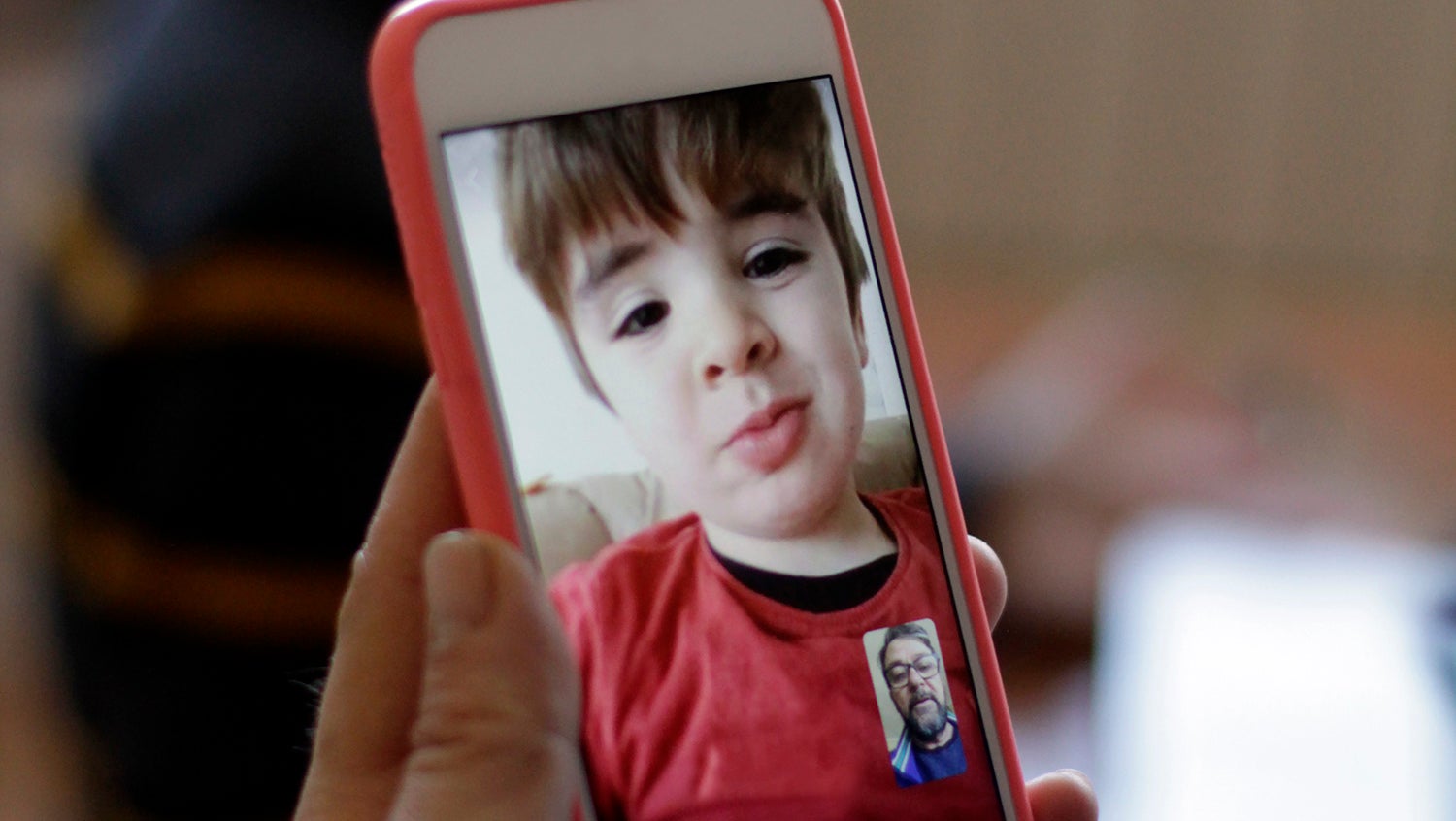Practical Strategies for Providing Therapy to Children via Telehealth
October 5, 2020

Getty Images
Children’s health experts at the Child Witness to Violence Program share best practices for mental health practitioners.
The COVID-19 pandemic has shifted the delivery of mental health services online. While giving some patients greater access and flexibility, this change poses its own challenges, especially for young children.
The Child Witness to Violence Project (CWVP) at Boston Medical Center (BMC) provides mental health and advocacy services to children and families affected by domestic violence, community violence, and other kinds of trauma. Over the last several months, their trauma-informed clinicians have had to adapt their practices to a new environment to engage their very young patients, who are younger than 8 years, as Zoom fatigue sets in.
Many of CWVP’s clinicians are social workers, a background that has proven useful in adapting to an unpredictable environment. “We’re trained to jump in and do the best with what we have, even when it’s limited,” says Courtney Bailey, clinical coordinator at CWVP. Social work’s social justice approach is also helpful in understanding how racial disparities and socioeconomic class impact clients.
The following list of best practices and strategies was derived from conversations with Bailey, along with CWVP program director Dr. Neena McConnico and mental health clinicians Stacy Normand and Rebecca Eisenberg.
1. Work with parents in advance to create a suitable environment for sessions.
For in-person therapy, a private space, sound machine, and developmentally appropriate toys were likely available. Now, therapists must work with parents and caregivers to ensure that the child has as much privacy as possible, which can be challenging depending on the family’s living situation. It may involve finding unconventional private space inside the home or meeting during a time when the caregiver and child are home alone.
Ideally, the child would be able to meet at a table or other flat surface. Therapists should also plan with parents and caregivers to make sure any necessary materials for play therapy, such as toys or art supplies, are available beforehand. Therapists at CWVP have been able to send families therapy kits stocked with toys, paper, art supplies, and puppets to support virtual therapy sessions.
2. Keep safety front of mind.
CWVP’s first priority is safety. Their clients have often witnessed domestic violence. During the time of COVID-19, it has been difficult for those impacted by domestic violence to access resources because many families are home together all day. An abusive partner living in the home may limit the opportunity to reach out to community programs, family, and friends for support. Even after a separation, many children continue to have relationships with the abusive caregiver.
Assessing potential safety concerns via video conference has its challenges. It is important for clinicians to discuss potential safety concerns privately with the survivor parent or caregiver if appropriate.
3. Be proactive in addressing technological problems.
Talk with families about expectations and access to protections for privacy and confidentiality in a virtual space. A private, password-protected internet connection is essential — a public internet connection will not provide the security necessary to ensure confidentiality. Clinicians should also discuss with families their comfort using technology and address their concerns if needed. Some families may not feel comfortable using video conferencing or other telehealth tools. If that’s the case, an alternative plan for engagement, such as regular parent guidance by phone, should be established until in-person services can resume or their discomfort with telehealth is addressed.
To help prevent lapses in attendance or to plan for potential bad connections during sessions, clinicians may need to do additional prep work before sessions to help families determine how their child will access therapy and how to use the technology. Some case management support in order to connect a family to resources to establish a private internet connection in the home may also be important.
4. Be flexible and give children agency.
Before COVID, CWVP sessions lasted an hour. Now, sessions are sometimes shortened to 30 or 45 minutes if a full hour is too long for the child to sit in front of a screen. Older children may sometimes find it easier to talk about difficult subjects with the camera turned off or by using the chat feature. Providing clients with options will allow them to choose which method of communication feels best for them.
5. Incorporate movement.
It is essential for children to move their bodies to self-regulate. During office visits, children have plenty of opportunities to move, jump, and explore the toys. Given that clients are now engaging in services seated in front of a screen, movement is not as much of a natural occurrence in session. Clinicians at CWVP have found ways to proactively incorporate movement, yoga, or dance breaks to give antsy young clients a break.
6. Give parents guidance on how to help their children manage emotions.
If a child has a tantrum at an in-person session, the therapist can directly work with the caregiver and child to calm them. Since the therapist cannot be physically present, therapists will need to prepare parents in advance with a plan on how the therapist and parent will support children when they experience difficult emotions.
7. Go back to basics.
Many techniques for trauma-informed therapy with children — such as drawing a story to describe an event, asking them where they feel sensations or emotions in their bodies, using a thermometer to discuss their feelings, or playing games — still work online.
8. Be prepared for setbacks and to rebuild rapport.
Barriers related to unreliable internet access or phones can create a new set of challenges. A family may have difficulty attending for a few weeks, which can be disruptive to the therapeutic process. Children may not understand why they haven’t seen their therapist; they may fear they have been abandoned or that the therapist became ill with COVID. In these instances, taking time to rebuild rapport is crucial.
9. Think beyond the therapy hour.
Many of CWVP’s clinicians are social workers who bring a holistic, advocacy-based perspective to their work with families. In addition to therapy for the child, they also think about what they can do to improve the child’s ecosystem. Work with caregivers to determine whether other referrals — such as employment, housing, food banks, educational resources, and childcare — can be provided to help the family thrive.
10. Be surprised by children’s creativity and adaptability.
Although adults are conditioned to see a computer screen as a barrier, it may not always be the case with young children. Therapists can still “play through the camera” and effectively use many play-based activities such as puppets and drawing. Children younger than four years sometimes ignore the camera entirely, holding up drawings or touching the screen. Even though the circumstances may not be ideal, many children find ways to use what is available to them to communicate — for example, acting out stories with action figures they have at home.
This article is part of a series from the Boston University Center for Innovation in Social Work & Health (CISWH) that highlights social workers working in healthcare and public health to address the nonmedical factors that impact health, known as social determinants of health. Know of a healthcare team that’s doing innovative work involving social workers? Contact us — we want to hear your story.


